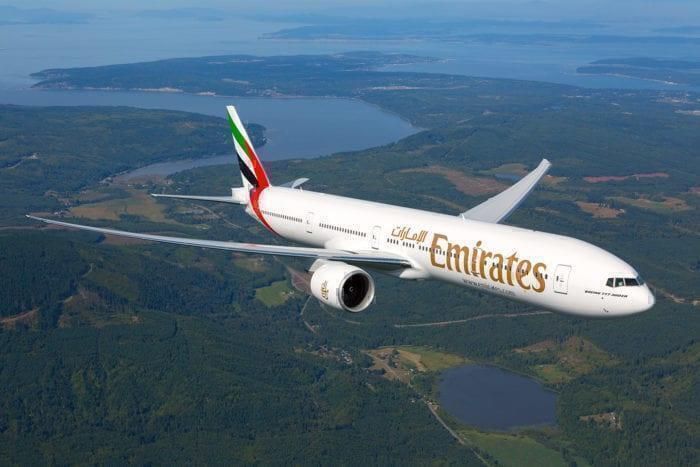Emirates currently has the new Boeing 787-10 Dreamliner on order, a brilliant plane that matches tried and true performance with modern technology. But for an airline that has historically only two types of aircraft, where would the Boeing 787 fit into the Emirates network?
What was the Emirates order?
Emirates made a surprising order for the Boeing 787-10 Dreamliner at the 2017 Dubai Airshow last year as many had expected that they would have ordered the Airbus A350XWB. This is a surprise move, as currently Emirates only has two variations of aircraft, Airbus A380 and Boeing 777, both of which are widebody long-haul large capacity aircraft.
The order itself was expensive and record-breaking as well, spending $15.1 Billion USD for 40 787-10 Dreamliners (Naturally it most likely cost less than this list price, as anyone ordering 40 of these aircraft would have had each of the $120 million USD craft discounted).
"We see the 787 as a great complement to our 777 and A380 fleet, providing us with more flexibility to serve a range of destinations as we develop our global route network," - Emirates chairman Sheikh Ahmed bin Saeed Al Maktoum.
Whether you like to fly the B777 or if you are looking forward to flying on Emirates new 787's, you can get 2% rewards back on the [ege_cards_link id="5234" caption="official_name_3"].
How will Emirates configure the Boeing 787 into their current business?
The president of Emirates, Tim Clark, has said that the 787 is a 'great eight hour aircraft'. If we were to take this at face value, we could assume that they are looking to have the 787 service medium haul routes for the airline, out of the hub in Dubai. This range of 6,430 nmi (11,910 km) could easily reach Europe and Asia.
Emirates says its 787-10s will operate a mix of two- and three-class configurations, seating "between 240 and 330 passengers", and the airline has the right to switch the order to the smaller 787-9 variant. This offers "additional flexibility for its future fleet and global network", says Emirates. That it highlights the option to switch is significant, as a move to the smaller 787 variants would indicate a return to the strategy of operating lower-capacity widebodies last pursued with its A330-200s.
What about the Emirates existing fleet?
As mentioned above, Emirates current fleet is a mix of Airbus A380’s and Boeing 777’s. They also, in addition to the Boeing 787s have 150 777x variants on order. We know that the 777’s will be used for long-haul routes (America and Australia) due to their range capabilities, so it is unlikely that the new 787's will compete with this craft.
The A380’s however, share too much with the 787 Dreamliners, and we will possibly see some of them replaced on lower demand routes with the new craft (Especially possible as the A380 fleet starts to age in the next 5-10 years). The Airbus A380’s will still continue to dominate the more restricted airports of the world, such as London Heathrow who has limited slots. It is a distinct advantage to have this capacity available, as having more available seats to sell in restricted airports means that you can go lower on price than your competitors.
These new planes are just part of the bigger picture for Emirates, with the airline introducing other changes and additions such as premium economy seats for their A380s from 2020. This will heat up the competition between the different Gulf airways over the next few years, and we can't wait to see what the other airlines do in rebuttal.
"We will be installing premium economy into those and it will be an Emirates premium economy, so it will be special,"
- Tim Clark


